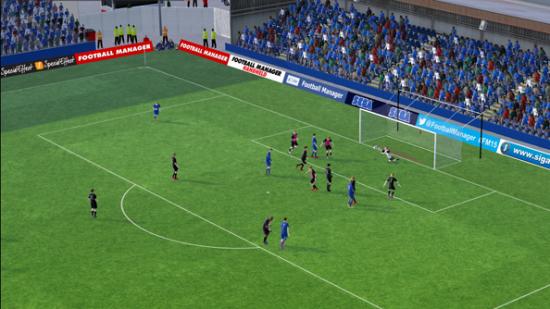Editor’s note: this article covers the Football Manager years. You can read the history of Championship Manager Part 1, covering the Championship Manager years from 1992 to 2003/04, here.
The Championship Manager series seemed unstoppable in the early ‘00s, having built and sustained momentum throughout the nineties. Then things got messy in 2003, leading to a split in the long-term partnership between series developers Sports Interactive and publishers Eidos. In an 2012 interview, Miles Jacobson (studio head of SI) and Ian Livingstone (then life president of Eidos) discussed the misunderstanding that led to the split; SI believing that Eidos was trying to force them out the door by hiring Beautiful Game Studios, whilst Eidos believed that SI was already considering jumping ship, forcing them to bring aboard BGS as a contingency plan.
Fancy yourself more an armchair general than a dugout deity? Try these PC strategy MVPs.
The split saw Eidos retain the Championship Manager name, but SI was crucially able to retain the rights to the source code, meaning that Football Manager would become the franchise to follow for those who’d grown up playing the series to date.
Football Manager 2005
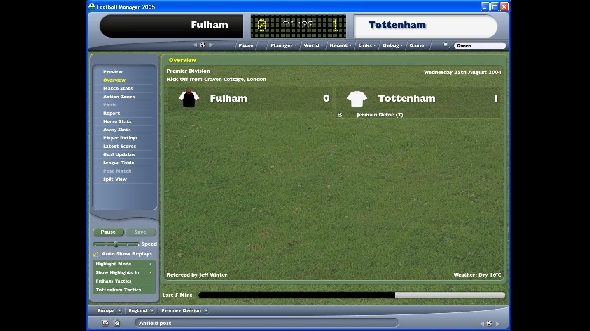
Largely following the same format as Championship Manager 4, FM 2005 was insanely popular, becoming the 5th highest selling PC game of all-time at the time of its release. Remarkably, this was in spite of being banned in China, where they took offence to the likes of Tibet and Taiwan being included as separate states, rather than being recognised as Chinese territories. Other licensing issues led to bizarre quirks including the likes of the German national team only ever picking fictional players, and all French club sides having PES-style fake names rather than their actual names.
Football Manager 2006
Another fairly iterative release, FM 2006’s main talking point was the inclusion of fictional team Harchester United from Sky One’s Dream Team – a football-based soap opera. No, I don’t know why either. Perhaps its most notable addition was the ability to comment on other clubs (more specifically, those clubs’ managers) in an attempt to gain a psychological advantage. This would serve as a precursor to many of the series’ key man management features going forward.
Football Manager 2007
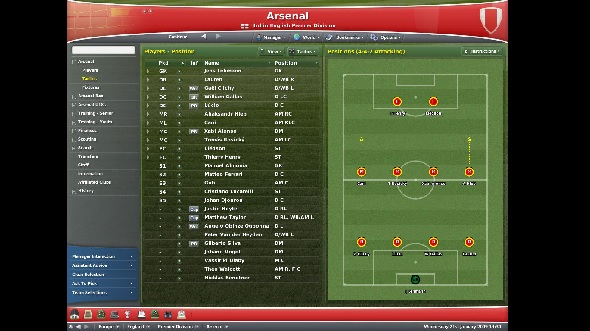
In the same year that saw Sports Interactive acquired by Sega, FM 2007 served as another iterative update, but introduced a number of new features. As well as pre-match team talks and improved interaction with players, staff and media, a major addition saw players presented with the option to take on or even become a feeder club, meaning the top clubs had somewhere to send their talented youngsters on loan and the lower clubs getting some short-term help in trying to climb the league ladder.
The ignominy of a sacking
Rangers in 2006/07 were a club in transition. In the midsts of the ill-fated managerial reign of Paul Le Guen, the squad was led by such luminaries as Hamed Namouchi, Filip Sebo and Jeremy Clement (OK, I’m deliberately ignoring some decent players for comic effect but you get the point). It seemed like a suitable challenge for me to take my boyhood club to the heights of Europe. Or…that was the plan. Here was the reality. Step 1 – ask the board for some funds to rebuild the squad. Step 2 – be told by the board that your transfer budget is £200,000. Step 3 – sell Barry Ferguson, because you can get £10m for him. Step 4 – face fan revolt for selling the captain. Step 5 – be informed by the board that financial constraints mean you’re only getting 20% of the £10m. Step 6 – go on a terrible run of form that sees Rangers lie 6th in December. Step 7 – get sacked.
I’ve had better seasons.
Football Manager 2008
The last iteration based on FM 2005, FM 2008 finally saw a licence acquired for the top two leagues in France. It also saw an increased focus on international management with a full quota of tournaments to take part in (in all but name, thanks to those ever-present licensing issues). However, it also represented something of a low point for the series, with a number of bugs and glitches requiring three major patches to rectify. However, for a franchise that was fifteen years into its lifetime at that point, one marginally dodgy – yet still very playable – title was a pretty good batting average.
How do you solve a problem like Mido?
Remember in part 1, where I stated that I struggled with the man-management aspect of more recent FM titles? Well, FM 2008 was undoubtedly the zenith of my issues with managing the fragile psyche of the modern-day footballer. Having guided Sheffield Wednesday to the giddy heights of 8th place in the Championship by the January transfer window of my third season in charge, I could see a play-off place in my sights. However, I had been struggling for goals, and knew I’d need additional firepower to maintain my push. Enter Mido, an Egyptian international and a supremely gifted yet highly temperamental goalscorer, who had made a career of providing good early returns on a club’s investment before invariably taking the huff and moving on. Still, I figured he was worth the risk for half a season. Oh, how wrong I was. It all started out so well too, with 5 goals in his first 3 games. However, that 3rd game was the catalyst to a disastrous second half. Mido scored a 40-minute hat-trick to put us up 3-1 at half-time and well on our way to an important win. Looking ahead to other important games, I withdrew him after an hour. Cue Mido taking his inevitable, but surprisingly quick huff, raging that I had dared to substitute him. Suddenly sullen and lazy, Mido scored two goals the rest of the season, Sheffield Wednesday missed out on the playoffs again, and he was on his way again. Like some kind of anti-Littlest Hobo.
God, I hated you, Mido.
Football Manager 2009
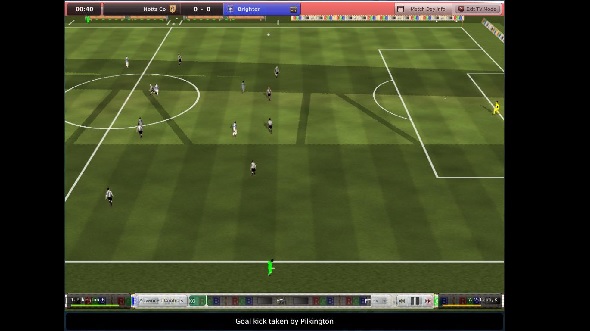
Sadly, that batting average would take an even bigger hit in 2008, with DRM issues crippling the game’s launch, leaving many unable to activate their copies. This came as a particular blow to Sports Interactive, as FM 2009 represented the first major overhaul since the Eidos split, being the first game in the series to include the 3D match engine (although the game also had a “TV” view, which replaced the old 2D engine and ensured that the game was still playable for those on lower-end systems).
Crouching Higher, Headed Tap-On
I wasn’t hugely sold on the 3D engine at first, if I’m honest. Having grown accustomed to the 2D engine, I assumed it offered all the visual information I needed. But then I bought Peter Crouch. And suddenly it all made sense. A long looping cross to the back post, the vain leap of a valiant but average height full-back, and this 6’ 7” beanpole of a striker not even having to leave his feet to win and bullet a header into the back of the net. Actually seeing that happen on a 3D plane was a revelation, and watching him win header after header after header over three seasons sold me completely on both the new engine and Crouch himself. Godspeed, you lanky magnificent bastard.
Football Manager 2010, 2011 and 2012
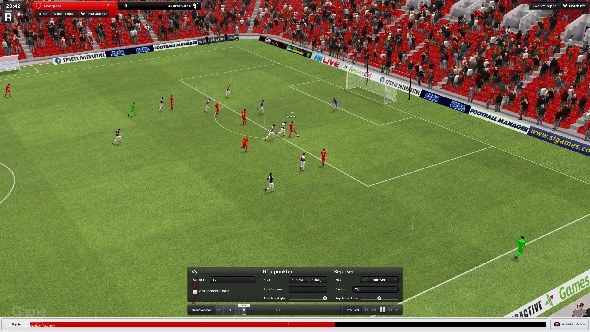
As you’ve probably come to realise, many entries in the franchise are essentially – like many sports game series – iterative affairs; season updates with slightly shinier facades. Whilst that’s probably a little unfair on Football Manager, where the vast majority of the game’s improvements are made under the hood, the entries released from 2009 to 2011 certainly don’t offer much on the surface to set them apart. However, these were also the years when the series began to establish itself in the mainstream consciousness with many believing it to be a genuinely useful tool in the realm of real-life football, particularly when it came to scouting at the lower levels.
Football Manager 2013
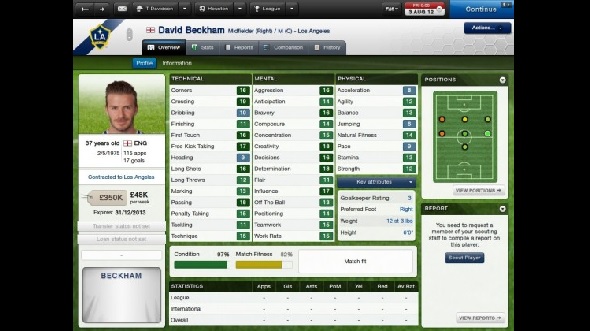
Another tentpole release, 2012’s entry particularly appealed to me, as it introduced FM Classic – a simplified mode designed to play more like older titles in the series, stripping out much of the intricate man-management and placing the focus back onto transfers and tactics. Preset challenges were the other main feature to debut. Typically set over half a season, these challenges would present you with set scenarios – go undefeated, deal with a major injury crisis, avoid relegation etc – offering an alternative way to play for those who’d rather not deal with the grind of a full season or career.
You can win anything with kids (Redux)
Perhaps unsurprisingly, given my luck with unearthing wunderkinder in previous iterations, I was instantly drawn to the You Can’t Win Anything With Kids challenge. Giving you a crop of talented youngsters, your goal is to win a trophy whilst incorporating said group of prodigies into your first team. I chose Arsenal, but what with them having a number of very good veterans and a side already capable of winning the title finishing 4th, I decided to fully commit to the spirit of the challenge and source players no older than 23. The likes of Stefan de Vrij, Adem Ljajic and Cristian Tello became key players, but the jewel in the crown – as well he should have been for how much I paid – was Neymar. He was at the heart of everything good the team did over the season and though that wasn’t quite enough to win the title (Manchester City and Chelsea both overtook us in the last few weeks of the season), I proudly led Arsenal to the FA Cup with the Brazilian turning in a virtuoso performance. Challenge completed, along with one of my best achievements in my history with the series.
Football Manager 2014
Reflecting the increasing role it was having in the world of PC game modding, the 2013 entry in the franchise would be the first to feature Steam Workshop support, essentially providing a one-stop shop for players to share their creations – custom tactics, kit designs, transfer updates, packs of player pictures and the like. In terms of gameplay, even more facets of the modern game were incorporated, including loyalty bonuses, transfers that see the player stay on loan at his old club, and more in-depth contract negotiations beyond just the pounds and pennies.
Football Manager 2015
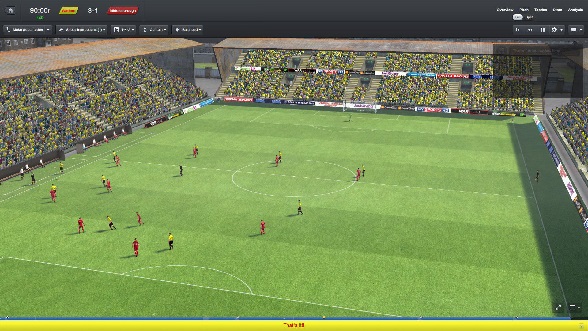
The addition of Twitch integration meant that you could broadcast your success or failings to the world, but the key gameplay change for FM 2015 saw you able to determine your managerial style from the get-go. Opting to choose the Tracksuit management style sees you gain additional attributes for training your players. Opting for Tactical gives you greater mental attributes, boosting your abilities in man management, your knowledge of the transfer market and the like.
Football Manager 2016
In an attempt to further attract the kind of audience previously put off by the sheer depth of a Football Manager title, Sports Interactive introduced two further modes – Fantasy Draft and Create-a-Club. Fantasy Draft will be familiar to anyone who has played a Madden, NHL or NBA 2K game in recent years, as you and a number of other managers choose from a pool of players with a set budget. Create-a-Club does exactly what it says on the tin and is basically the game’s Editor turned into a gameplay mode, allowing you to design your own club from kits to stadiums and everything in-between. Lastly, in another sign that the main game was becoming perhaps more simulation than game, Football Manager 2016 would be the first to feature ProZone integration, offering a frankly insane level of statistical analysis.
Accrington Stanley? Who are they?
Those of you old enough to remember the 1980s may recall a television advert for milk (Yep, literally just milk. These were simpler times.) in which two young Liverpool-supporting boys are discussing milk, with one stating that not drinking milk would only make him good enough to play for Accrington Stanley, then a non-league outfit. I never forgot that clear slap in the face to poor Stanley and, around 30 years later, set out to right that wrong, what with them now being an established League 2 club. And right that wrong I did. Progress was slower with Stanley than it had been with Barnet in the Championship Manager days, but after six seasons, I sat mid-table in the Championship. And then it came – the inevitable FA Cup tie with Liverpool. This was it. This was the moment. The opportunity to end 30 years of mockery. The draw was kind to us, giving us a chance to bomb them out – at a time when they were languishing in 8th place in the Premier League – in front of our own fans. The stage was set and I was confident.
We lost 3-0. Hmmm…maybe I need to drink more milk.
Football Manager 2017
AKA the “Brexit” game. Yes, the first Football Manager to be released post-EU Referendum, Sports Interactive displayed their unparalleled attention to detail by including a number of possible scenarios and the ramifications for British football, particularly the transfer market, work permits and limitations on the number of foreign players you can have at your club. In another tweak seemingly influenced by other sports games franchises, the game now includes a “social media” feed, allowing you to see what pundits and fans alike think of your performances. You know…just in case you weren’t paranoid enough about your own ability (or lack thereof). FM 2017 is also notable for garnering a huge swathe of negative reviews on Steam, seemingly down to the lack of a Simplified Chinese language option. I guess you can’t please all of the people all of the time.
Football Manager 2018 and beyond
So, where does the series go from here? Well, as always, we’ll hear very little about FM 2018 until much nearer its release date. However, the time does feel ripe for another substantial overhaul. What could such a thing entail? New engine? New UI? Post-match pundit analysis as the likes of NBA 2K has incorporated? Personally, I’m hoping SI chooses to revisit the idea of in-game commentary. Just…not Tyldesley. Please.
